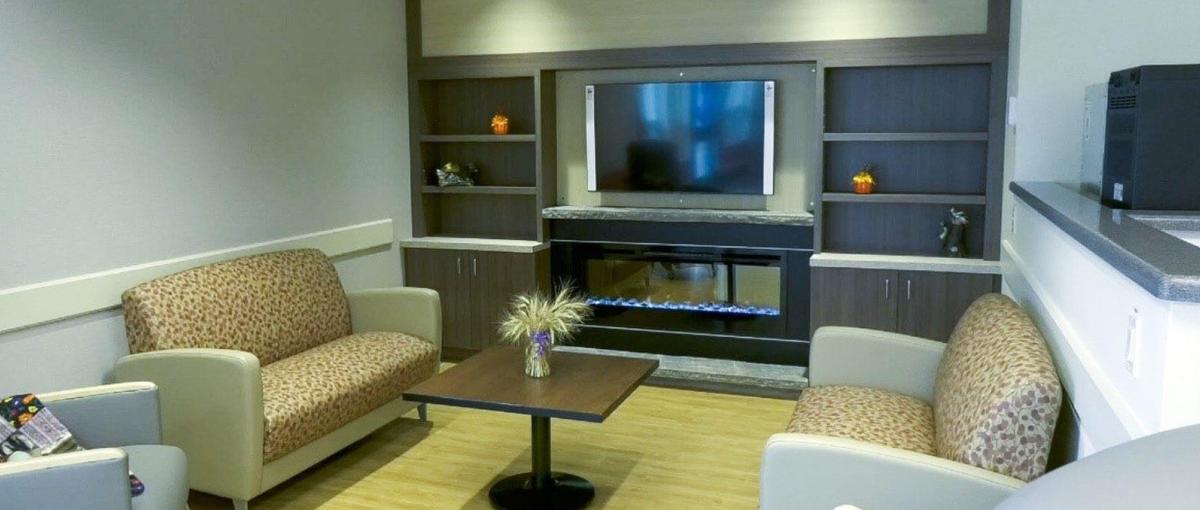Creating a new care experience for seniors
Covenant leaders share their thoughts on transforming seniors’ care in Alberta

January 11, 2020
By Marguerite Watson, Senior Communications Advisor, Covenant Health
The dramatic impact of the COVID-19 pandemic on seniors has accelerated the need to examine and transform health care to better meet the health and wellness needs of this important population.
“The pandemic has identified opportunities to learn from others across Canada and to do things differently,” says Scott Baerg, senior operating officer for continuing care at Covenant Health.
We sat down with Scott and two other Covenant leaders — Sheli Murphy, senior operating officer, rural services, and Jo Ann Molloy, vice president, resident experience, Covenant Care — for a Skype conversation about creating a new care experience for seniors in Alberta.
What are the biggest challenges in the care experience that we need to address?
Care providers have faced challenges related to the funding and staffing models for care for many years. The COVID-19 pandemic identified an additional challenge — increased negative perceptions or feelings among the public about what it means to go into care, says Jo Ann.
Moving care out of facilities and into the community could be one positive response to that concern. There are opportunities to use technology and community partnerships to care for people in their homes, says Sheli.
“We could monitor them, but they could be as independent as possible within their own homes with their loved ones. That wouldn’t work for 100 per cent of the people, but if we could even get 20 per cent of people safe and stable in their homes, we would reduce the need to have them in any care whatsoever, and we would enhance their quality of life.”
Making the journey into a continuing care home less frightening or negative for people who cannot live independently will need to be a focus going forward. From an infrastructure perspective, that will mean designing new care homes through a different lens, says Scott.
“There’s only so much you can do within the walls of some of the older buildings. The opportunity is that, in Alberta, there's recognition that we need to build new spaces and replace some of the old infrastructure. The reality is that the new infrastructure is going to be the infrastructure for many years, so it's important that it be designed in collaboration with seniors and their families to ensure it meets their needs for comfort, safety and community.”
The Covenant family is uniquely positioned to reimagine and transform seniors’ care in Alberta. Since 2013, Covenant has constructed, redeveloped and expanded five seniors’ care facilities across Alberta, adding over 1,000 new continuing care spaces.
What does good, quality care look like?
Scott, Jo Ann and Sheli agree that providing quality care means enhancing quality of life.
“If a resident or client’s quality of life is good, then their physical, spiritual and emotional needs are being met,” says Scott. “There’s a lot of talk about quality of care, but we need more conversation about quality of life.”
And how one person defines good quality of life may not have any meaning for another. That’s where knowing the residents in our care becomes important. Our seniors and their caregivers must have a voice in care decisions to ensure their needs are met in ways that are most meaningful to them.
“Quality care means that our care enables people to have the best of the life they can have. They may be quadriplegic. They may be confused. But our care enables them to have a sense of purpose and meaning in their life,” says Sheli.
If you could design it your way, what would the future of seniors’ care look like?
Ideally, a care home would be a safe environment where people have choice, some input into what happens in their daily life, a sense of purpose and meaning, and connections with the community both inside and outside the facility.
“If I had choice and some sense of control over what I can do today and what would be meaningful for me, that would be a grand place to live,” says Sheli.
Continuing care should also be designed with the flexibility to keep people in one place as their needs for care change and to keep spouses together even if their care needs are different.
Care should be centred on the resident and their needs so people can “still have meaning, joy and experiences and fully live,” says Jo Ann.

What have we seen elsewhere in terms of caring for seniors?
The models in other places seem to include more community supports for seniors, says Jo Ann. For example, in the Netherlands, where she toured seniors’ health and dementia care centres in 2018, there are systems in place at the community level that are geared to keeping people at home, including providing social support such as grocery shopping, housekeeping or assistance with activities of daily living. Seniors who need more help live in homelike family settings of three to six residents rather than in institutional 200- to 500-people buildings. And people with dementia are free to be out in the community, their whereabouts tracked with GPS, instead of being confined.
What are we doing right now to position ourselves for the future?
Establishing Covenant Care and Covenant Living as two parts of the Covenant family that are dedicated to seniors’ care and support has provided opportunities to do things differently, says Sheli. For instance, Covenant has been able to incorporate a hospice model in supportive living and long-term care sites to meet the needs for end-of-life care for seniors in different areas. And it has created respite day programs for family caregivers, allowing people with dementia to remain in the community.
Covenant’s Living Our Values program, a philosophy of care that focuses on quality of life along with quality of care, is also shifting our sense of what’s important to the people we care for and setting the tone for new developments, says Sheli. An example is the Living Our Values work at Killam Campus of Caring, where residents and their families have been part of a design team that has developed processes for learning about residents’ preferences and communicating them to staff.
“We’re also leveraging technology,” says Jo Ann. “As we move forward, we have to consider enablers that keep people independent.”
The new Covenant Care sites are all Wi-Fi ready. Google Home has been installed in some of the supportive living suites. And Covenant Living is using Maple to provide virtual medical visits for seniors at its two independent living homes — Evanston Summit and Martha’s House.
For new builds — such as the new care centre under construction in Lethbridge — Covenant is designing safe, light-filled environments connected to nature and the community that make sense for the people who will live and work in them every day.